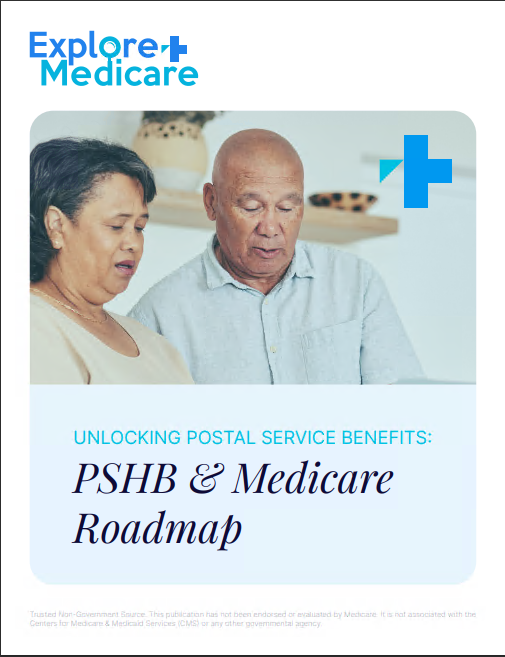Key Takeaways
-
Medicare offers limited enrollment windows throughout the year. Missing them can lead to late penalties or gaps in coverage.
-
Understanding the timing of each enrollment period is essential to avoid unnecessary costs and ensure continuous healthcare access.
Why Timing Matters More Than You Think
Medicare doesn’t allow you to enroll at just any time of the year. Whether you’re new to Medicare or thinking about making changes to your existing coverage, you’ll need to wait for a specific enrollment period. These windows have strict deadlines and missing them can mean late penalties or going without coverage until the next cycle.
Let’s break down what you should watch for and when.
The Initial Enrollment Period (IEP)
Your very first chance to sign up for Medicare is your Initial Enrollment Period. This seven-month window is triggered by your 65th birthday.
-
When it happens: It begins three months before the month you turn 65, includes your birthday month, and ends three months after.
-
Who it applies to: Anyone turning 65 who is eligible for Medicare, whether you’re retiring or continuing to work.
What You Can Do During IEP
-
Enroll in Medicare Part A and/or Part B.
-
Sign up for a prescription drug plan (Part D).
-
Choose a Medicare Advantage plan, if desired.
Why It’s Critical
If you miss signing up for Part B during this time and don’t qualify for a Special Enrollment Period, you may face a late enrollment penalty and delays in coverage.
The General Enrollment Period (GEP)
If you missed your Initial Enrollment Period and aren’t eligible for a Special Enrollment Period, the General Enrollment Period is your fallback.
-
When it happens: Every year from January 1 to March 31.
-
When coverage begins: Your coverage will start July 1 of the same year.
Who Should Use GEP
This period is for people who didn’t sign up for Medicare Part A and/or B when first eligible and don’t qualify for other special timeframes.
Penalties May Apply
Using the General Enrollment Period can result in a lifetime late enrollment penalty for Part B. The longer you wait, the higher your premium surcharge could be.
The Annual Enrollment Period (AEP)
This is your once-a-year opportunity to review and make changes to your Medicare health or drug coverage.
-
When it happens: October 15 to December 7 every year.
-
When changes take effect: January 1 of the following year.
What You Can Do During AEP
-
Switch from Original Medicare to a Medicare Advantage plan.
-
Switch from one Medicare Advantage plan to another.
-
Enroll in, drop, or change a Part D prescription drug plan.
-
Return from a Medicare Advantage plan to Original Medicare.
This is a critical window if you’re already enrolled and want to reassess your needs or if your current plan is changing for the next year.
The Medicare Advantage Open Enrollment Period
Separate from AEP, this period is designed specifically for those already enrolled in a Medicare Advantage plan.
-
When it happens: January 1 to March 31.
-
What you can do:
-
Switch to another Medicare Advantage plan.
-
Drop your Medicare Advantage plan and go back to Original Medicare (and optionally enroll in a Part D plan).
-
Limitations
You can only make one change during this time, and you must already be enrolled in a Medicare Advantage plan at the start of the period.
Special Enrollment Periods (SEPs)
Life doesn’t always fit into neat timelines. Medicare recognizes this and offers Special Enrollment Periods for certain circumstances.
Common SEP Triggers
-
Losing employer coverage
-
Moving out of your plan’s service area
-
Qualifying for Medicaid or Extra Help
-
Plan changes its contract with Medicare
Timing Varies
The length and rules of each SEP depend on the specific qualifying event. For example, if you’re leaving employer coverage, your SEP typically lasts 8 months from the end of that coverage.
Missing your SEP window can result in delayed coverage and potential penalties.
Enrollment Periods for People Under 65 with Disabilities
If you’re under 65 and receive Social Security Disability Insurance (SSDI), you’re automatically enrolled in Medicare after 24 months of benefits.
-
Your Initial Enrollment Period begins three months before your 25th month of disability benefits and runs for seven months.
You’ll receive a Medicare card in the mail, and coverage generally begins the first day of your 25th month receiving SSDI.
If you qualify due to ALS (Amyotrophic Lateral Sclerosis), enrollment starts the same month your disability benefits begin.
When You Delay Medicare Because You’re Still Working
If you or your spouse are still working when you turn 65 and are covered by employer health insurance, you may choose to delay Medicare Part B without penalty.
-
You’ll qualify for a Special Enrollment Period when that employment or coverage ends.
-
This SEP lasts 8 months, allowing you to sign up for Part B (and Part A, if you haven’t already).
Make sure the employer plan is creditable coverage—coverage that is expected to pay at least as well as Medicare. If it’s not, you might face penalties later.
What Happens If You Miss All Enrollment Periods?
Unfortunately, Medicare doesn’t offer grace periods for missed enrollments unless you qualify for an SEP. If you skip your Initial Enrollment Period, don’t qualify for an SEP, and miss the General Enrollment Period, you may have to wait nearly a full year for coverage.
This can have serious consequences:
-
No access to doctor visits or hospital care under Medicare.
-
Potential lifetime late enrollment penalties.
-
Gaps in prescription drug coverage if you’re not enrolled in a Part D plan.
Avoiding Penalties: What to Know
Late penalties are avoidable if you act within the proper windows:
-
Part B penalty: 10% for each 12-month period you delayed.
-
Part D penalty: 1% of the national base premium for every month you went without creditable prescription drug coverage.
Once added, these penalties are permanent. The only way to avoid them is by enrolling on time or maintaining creditable coverage.
Planning for Medicare Enrollment: Your Timeline Checklist
Here’s a brief overview to help you stay ahead:
-
Age 64 and 9 months: Start researching Medicare options.
-
3 months before 65: Initial Enrollment Period begins. Sign up early to avoid delays.
-
65th birthday month: Deadline to enroll without penalty if you haven’t yet.
-
After employer coverage ends: SEP window opens for 8 months.
-
Every October 15–December 7: Review and adjust your plan during AEP.
-
January 1–March 31: Use GEP or Medicare Advantage Open Enrollment, if eligible.
Keep track of these periods, especially if your circumstances change.
How to Sign Up
You can sign up for Medicare through:
-
The Social Security Administration website (for Parts A and B)
-
Your local Social Security office
-
Plan providers (for Part D or Medicare Advantage options)
Always double-check deadlines and eligibility before submitting your application. Missing even a single day could mean costly delays.
Take Medicare Enrollment Seriously
Medicare’s enrollment rules are strict, and the windows don’t reopen easily. Staying informed about each period, understanding how life events affect your eligibility, and planning ahead can save you time, money, and frustration.
For personalized help, get in touch with a licensed agent listed on this website who can walk you through each step and ensure you don’t miss the coverage you need.









